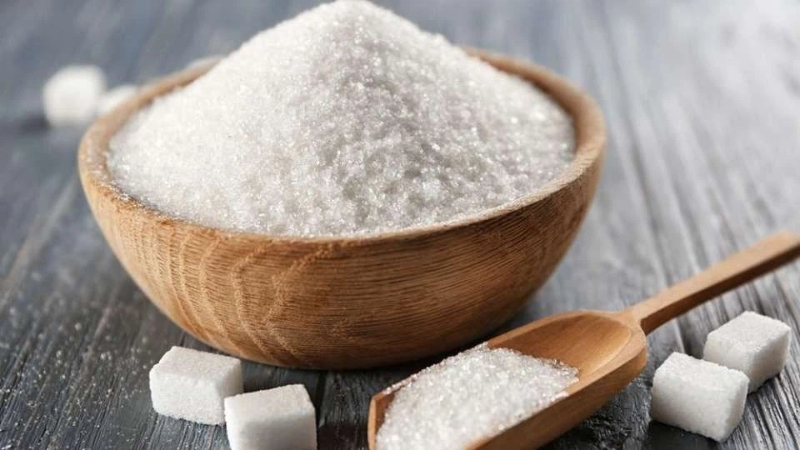Views: 222 Author: Sara Publish Time: 2025-11-11 Origin: Site








Content Menu
● How Aspartame Is Metabolized
● Safety assessments and Regulatory status
● Potential health considerations and controversies
● Practical guidance for manufacturers
● Comparisons with other sweeteners
● FAQ
>> 1. What is Aspartame and how is it produced?
>> 2. Is Aspartame safe to consume and at what levels?
>> 3. Can Aspartame cause cancer or other serious health issues?
>> 4. How does Aspartame affect people with PKU?
>> 5. What are common alternatives to Aspartame in commercial products?
Aspartame is a widely used low-calorie sweetener that enables product developers to reduce sugar content without sacrificing taste. For manufacturers serving the food, beverage, and health-care industries, Aspartame offers a predictable sweetness profile, stable formulation possibilities, and compatibility with various packaging formats. This article examines what Aspartame is, how it is metabolized, the safety assessments that shape regulatory stances, and practical considerations for formulators and contract manufacturers. Throughout, Aspartame is referenced in the context of broader sweetener strategies, including natural sweeteners, functional polyols, and dietary fibers—areas in which your China-based factory specializes. The goal is to equip overseas manufacturers with the knowledge needed to decide when and how to incorporate Aspartame into blended sweeteners, tablet products, or OEM/ODM offerings.

Aspartame is an artificial, non-saccharide sweetener that is about 200 times sweeter than sucrose. Chemically, it is the methyl ester of a dipeptide composed of two natural amino acids: phenylalanine and aspartic acid. In practice, Aspartame is used in very small amounts to achieve desired sweetness, allowing formulation teams to maintain reduced caloric load while preserving flavor integrity. When incorporated into products, Aspartame blends with other sweeteners or functional ingredients to achieve target taste, mouthfeel, and stability. For manufacturers, this profile makes Aspartame compatible with diet beverages, sugar-free snacks, dairy desserts, and certain medical nutrition products where strict calorie control is required. The integration of Aspartame into blends aligns with OEM/ODM capabilities, enabling customized sweetness curves, stabilization strategies, and scalable tablet production for international markets.[1][2][7]
Upon ingestion, Aspartame is rapidly hydrolyzed in the gastrointestinal tract into its constituent parts: aspartic acid, phenylalanine, and a small amount of methanol. The body then uses these components in the same ways as when they are derived from dietary protein and other sources. Because Aspartame itself is not present in the bloodstream after digestion, the metabolic focus shifts to the activity of its breakdown products. This distinction is central to safety assessments and to understanding consumer concerns about methanol, phenylalanine, and excitatory amino acids. For individuals with phenylketonuria (PKU), phenylalanine content is a consideration in labeling and consumer guidance. From a manufacturing perspective, knowing the metabolic fate of Aspartame informs compatibility with formulation strategies, including blending with polyols and natural sweeteners to balance flavor, caloric load, and regulatory labeling.[5][9][1]
Regulatory agencies around the world have conducted extensive evaluations of Aspartame. The consensus at approved levels emphasizes that Aspartame is safe when consumed within established guidance, though some agencies highlight the need for ongoing appraisal of emerging data. Key protections include an established Acceptable Daily Intake (ADI) that is set well below doses associated with adverse effects in animal studies. The International Agency for Research on Cancer (IARC) categorized Aspartame as possibly carcinogenic to humans (Group 2B); however, this classification does not imply a confirmed cancer risk at typical exposure levels. National authorities, including the U.S. Food and Drug Administration (FDA) and the European Food Safety Authority (EFSA), reaffirm that contemporary evidence does not establish a causal link between Aspartame at approved intakes and cancer or other major health outcomes for the general population. The nuance is that risk is dose-dependent, and consumer safety hinges on adherence to ADI values and responsible labeling. For your overseas manufacturing partners, this means aligning product development with current regulatory expectations, providing clear consumer guidance, and maintaining rigorous quality control in blended sweetener systems.[6][7][8][1]
While Aspartame has a long history of regulatory acceptance, debates persist about potential associations with headaches, mood changes, digestive symptoms, or rare sensitivities. Most studies show inconsistent and non-causal results across diverse populations, and many observed effects may be confounded by other ingredients or lifestyle factors. Manufacturers should communicate clearly that evidence is not uniform and that individual responses can vary. For certain consumer segments, such as those with PKU or phenylalanine sensitivity, labeling alerts are essential. Overall, the risk–benefit calculus for Aspartame favors calorie reduction and sugar replacement in many diabetes-friendly and weight-management formulations when used within ADI guidelines. When designing blends, consider how Aspartame interacts with polyols, natural flavors, and stabilizers to preserve taste profile without compromising safety or regulatory compliance.[4][7][11][1]

- Formulation strategy: If Aspartame is chosen for a product, evaluate how it complements or competes with other sweeteners in a blend. Blends with sucralose, acesulfame-K, or sugar alcohols (polyols) can help achieve a balanced sweetness, reduce aftertaste, and improve thermal stability for processing. Your OEM/ODM services can tailor these blends to regional taste preferences, ensuring consistent mouthfeel and flavor across markets.
- Stability and processing: Temperature, humidity, and storage conditions influence sweetness perception. Consider microencapsulation or protective matrices when incorporating Aspartame into tablets or moisture-sensitive formats.
- Labeling and regulatory compliance: Ensure accurate labeling of phenylalanine content for PKU concerns and comply with jurisdiction-specific regulations regarding sweetener disclosures. Clear documentation supports international distribution and consumer trust.
- Consumer communication: Provide transparent information about sweetener blends, including the role of Aspartame, to help consumers make informed choices. This aligns with responsible product stewardship and reduces consumer confusion in markets with heightened scrutiny of artificial sweeteners.
- Integration with your core capabilities: Your factory's strength in natural sweeteners, functional polyols, and dietary fiber enables you to offer innovative blended sweeteners that combine Aspartame with non-nutritive or low-calorie components, as well as tablet-ready formats and turnkey OEM/ODM solutions for overseas manufacturers.[2][7][9]
Aspartame sits among a broad family of sweeteners, including traditional sugar, natural high-intensity sweeteners (like stevia), and various synthetic or polyol-based alternatives. Manufacturers often adopt tiered strategies that balance taste profile, caloric content, stability under processing, regulatory status, and consumer acceptance. A concise comparison helps product developers select appropriate partners for particular applications:
- Aspartame vs stevia: stevia offers natural origin and different flavor nuances; blending Aspartame with stevia can adjust aftertaste and achieve moderate calories.
- Aspartame vs sucralose: sucralose is heat-stable and often used in baking; combining with Aspartame can balance sweetness intensity and aftertaste.
- Aspartame vs polyols (xylitol, maltitol): polyols provide bulk and mouthfeel but may have laxative effects in excess; blends can create sugar-like profiles with reduced calories.
- Aspartame vs saccharin: both are low-calorie options, with different taste profiles and regulatory histories; formulation choices depend on target sensory attributes and regional preferences.
Aspartame remains a pivotal tool in modern formulation for reducing calories while maintaining sweetness across beverages, dairy, confectionery, and health-friendly products. For manufacturers, the key is to align Aspartame use with robust QA processes, transparent labeling, and a nuanced understanding of regulatory guidance in target markets. When combined with your strengths in natural sweeteners, functional polyols, and dietary fiber, Aspartame-based blends can expand the portfolio of OEM/ODM offerings to overseas clients, enabling tailored sweetness profiles that meet regional taste expectations without compromising safety or compliance. By focusing on science-based communications, rigorous adherence to ADI guidelines, and careful integration with other sweeteners, producers can deliver high-quality products that satisfy both consumer demand and regulatory requirements.[1][7]

A: Aspartame is the methyl ester of a dipeptide composed of phenylalanine and aspartic acid. It is synthesized through chemical processes that couple the amino acids and form the methyl ester, resulting in a high-intensity sweetener used in very small amounts.[2][1]
A: Regulatory agencies consider Aspartame safe when consumed within the established Acceptable Daily Intake. While some classifications note potential carcinogenicity in specific contexts, the consensus for general population use remains that there is no proven cancer risk at approved exposure levels. Individual considerations, especially for those with PKU, necessitate labeling warnings.[8][6][7]
A: The authoritative position is that, at approved intakes, Aspartame does not cause cancer for the general population. Some agencies classify it as possibly carcinogenic (Group 2B) in isolation, but this does not translate to a confirmed risk at real-world consumption levels. Ongoing reviews emphasize the importance of dose and context.[6][7]
A: People with PKU must monitor phenylalanine intake; Aspartame contains phenylalanine and is labeled accordingly in many regions to help these individuals avoid adverse effects. PKU considerations are a standard part of labeling and consumer guidance for products containing Aspartame.[4][7]
A: Alternatives include stevia, sucralose, saccharin, and various polyol blends. For product developers, blends that pair Aspartame with these alternatives can achieve desired taste, mouthfeel, and processing stability while addressing regional preferences and regulatory constraints.[7][2]
[1](https://ific.org/resources/articles/everything-you-need-to-know-about-aspartame/)
[2](https://en.wikipedia.org/wiki/Aspartame)
[3](https://www.efsa.europa.eu/sites/default/files/corporate_publications/files/factsheetaspartame.pdf)
[4](https://www.webmd.com/diet/what-to-know-about-aspartame)
[5](https://pmc.ncbi.nlm.nih.gov/articles/PMC8227014/)
[6](https://www.who.int/news/item/14-07-2023-aspartame-hazard-and-risk-assessment-results-released)
[7](https://www.fda.gov/food/food-additives-petitions/aspartame-and-other-sweeteners-food)
[8](https://www.cancer.org/cancer/risk-prevention/chemicals/aspartame.html)
[9](https://www.sciencedirect.com/topics/agricultural-and-biological-sciences/aspartame)
[10](https://www.jeffersonhealth.org/your-health/living-well/what-you-need-to-know-about-aspartame-the-sugar-substitute)
[11](https://www.medicalnewstoday.com/articles/322266)
